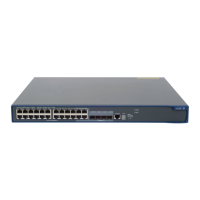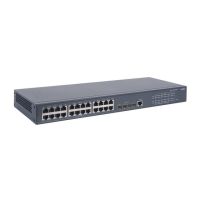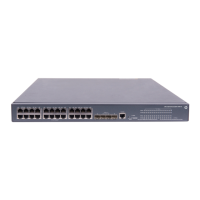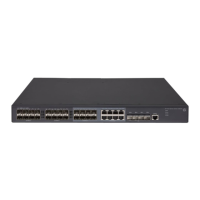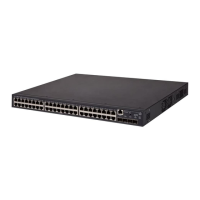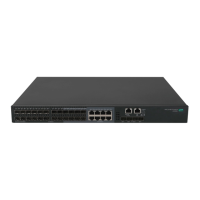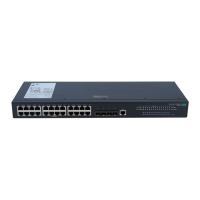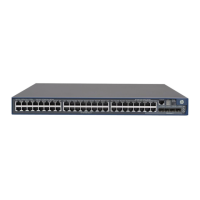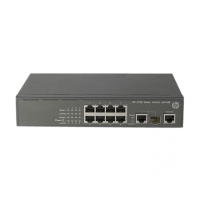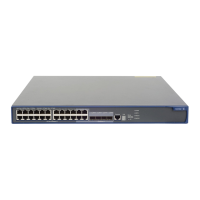128
Ste
Command
Remarks
6. Enable dynamic
MAC-based VLAN
assignment.
mac-vlan trigger enable
By default, dynamic MAC-based
VLAN assignment is disabled.
When you use the mac-vlan trigger
enable command to enable dynamic
MAC-based VLAN assignment, HP
recommends that you configure the
vlan precedence mac-vlan command,
so that VLANs are assigned based on
single MAC addresses preferentially.
When dynamic MAC-based VLAN
assignment is enabled, HP does not
recommend configuring the vlan
precedence ip-subnet-vlan command,
which will make the system assign
VLANs based on IP subnets, because
the configuration does not take effect.
7. Configure VLAN
matching precedence.
vlan precedence mac-vlan
Optional.
By default, VLANs are preferentially
matched based on MAC addresses.
8. Disable the PVID of the
port from forwarding
packets with unknown
source MAC addresses
that do not match any
MAC address-to-VLAN
entry.
port pvid disable
Optional.
By default, when a port receives a
packet with an unknown source MAC
address that does not match to any
MAC address-to-VLAN entry, it
forwards the packet in its PVID.
To configure dynamic MAC-based VLAN:
Ste
Command
Remarks
1. Enter system view.
system-view N/A
2. Enter interface view or port
group view.
• Enter Layer 2 Ethernet
interface view:
interface interface-type
interface-number
• Enter port group view:
port-group manual
port-group-name
Use either command.
• The configuration made in Ethernet
interface view applies only to the port.
• The configuration made in port group
view applies to all ports in the port
group.
3. Configure the link type of the
ports as hybrid.
port link-type hybrid By default, all ports are access ports.
4. Configure the hybrid ports to
permit packets from specific
MAC-based VLANs to pass
through.
port hybrid vlan vlan-list
{ tagged | untagged }
By default, a hybrid port only permits the
packets of VLAN 1 to pass through.
5. Enable the MAC-based VLAN
feature.
mac-vlan enable Disabled by default.
6. Configure
802.1X/MAC/portal
authentication or any
combination.
For more information, see
Security Command
Reference.
N/A
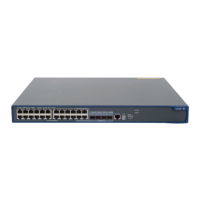
